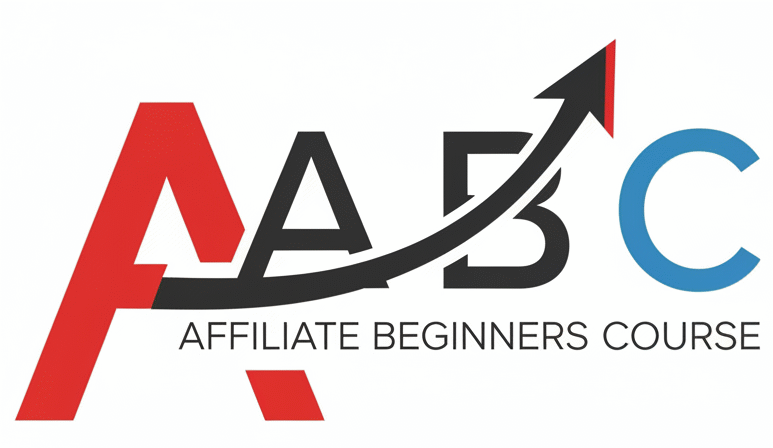Starting affiliate marketing comes with this feeling of excitement. The idea of making passive income is the perfect thing that can happen to anyone. Including you. But for many beginners, this becomes a turn off when results don’t show up as fast as expected which turns out frustrating for beginners.
Affiliate marketing is undoubtedly a business, and like every other business, you need to have a structure, patience, and goals that are achievable. When you set a clear and achievable affiliate income goals, you’ve done the first real step toward building consistent earnings.
In this guide, I’m going to teach you exactly how to set realistic affiliate income goals, understand how much you can actually earn, and give you a step-by-step plan that will turn your affiliate marketing journey into a system that pays you forever.
Why Setting Realistic Affiliate Income Goals Matters
If you don’t set goals, you’ll end up doing guess work as an affiliate. Goals will help you with direction, It will help you stay consistent and allow you to track your growth over time.
Many beginners fall into two traps:
- Setting a very high goal — like expecting $1,000 in the first month.
- Not setting any goals at all — just writing blog posts and hoping for results.
Both approaches will eventually lead to frustration instead of helping you:
- Stay motivated through slow growth phases
- Measure progress weekly or monthly
- Focus your time on what truly drives income
- Build discipline in content creation and promotion
Having a clear goal for your affiliate business will do same job that a GPS has to do. Without a clear goal, you’ll get lost even when you have the free tools.
Check out this goal manager here
Step 1: Understand How Affiliate Marketing Income Works
Before you set how much you would want to earn, you need to understand how affiliate income is generated. Earnings in Affiliate marketing depend on three main factors:
1. Traffic
Traffic is the number of people visiting your blog, YouTube channel, or social page. More people visiting your blog usually means more clicks on your Affiliate links which hence lead to potential conversions.
2. Conversion Rate
You’re not earning any income as an affiliate if people just visit your blog without clicking on your link and buying a product. The percentage of people who actually buy a product through your affiliate link defines what conversion rate is. For most beginners, this ranges between 1% – 5%.
3. Commission Rate
This is how much you earn per sale of an affiliate offer. For example, Amazon pays from 1% to 10% in product commission, while promoting a software as an affiliate, like web hosting or tools can pay $20–$200 per sale.
So if you set a goal to earn up to $500 per month, and each sale of an affiliate offer (product) pays you up to $25 commission, it means you need to make up to 20 sales every month — that’s about one sale every 1–2 days.
Formula Example:
Monthly Goal ($500) ÷ Commission ($25) = 20 Sales Needed
If you can understand this, then you can build a clearer and more profitable affiliate earnings plan.
Step 2: Know Your Current Level and Choose the Right Goals
As a beginner affiliate, you should understand you’re new to this. It’s not every affiliate that starts from the same place. Many are ahead of you already with their up-to-date blogs or large social media followers, while others like you are starting from zero.
Your goals should reflect your starting point.
If You’re Just Starting
Focus on traffic and content goals instead of money goals for the first 3 months. This means your focus should be on getting people to see your products.
For example:
- Publish 3–4 SEO-optimized blog posts weekly.
- Reach 1,000 monthly visitors.
- Grow your email list to 100 subscribers.
If You Have an Audience
Set income-linked goals:
- Aim for your first 10 affiliate sales.
- Earn your first $100 in commission.
- Build relationships with 2–3 affiliate networks.
Your confidence will be super when you set goals that are realistic. Over time, your small wins compound into meaningful income. And then, you’ll also find yourself in the league of top affiliates.
Step 3: Research Average Affiliate Income Benchmarks
If you’re new to affiliate marketing and you’re wondering, “How much do affiliate marketers really make?”
Let me break it down for you:
| Experience Level | Average Monthly Income | Time Required |
| Beginner (0–6 months) | $0 – $200 | Building foundation |
| Intermediate (6–12 months) | $200 – $1,000 | Regular content & traffic |
| Advanced (1–3 years) | $1,000 – $5,000+ | Established audience |
| Expert (3+ years) | $5,000 – $20,000+ | Scalable systems & email funnels |
Depending on the product niche you have chosen, these numbers may vary but the pattern remains the same. Creators who are consistent earn more.
Setting your affiliate income goals based on these benchmarks helps you stay grounded and avoid unrealistic expectations.
Step 4: Break Big Goals into Smaller, Trackable Milestones
The easiest way to stay consistent is to break your large income goal into smaller milestones. For example:
Example:
If your goa is to earn $1,000/month within 12 months
Break it down like this:
- Month 1–3: Focus on SEO, build 10 blog posts, and grow traffic.
- Month 4–6: Join 3 affiliate programs, publish reviews and tutorials.
- Month 7–9: Start getting 2–3 sales weekly.
- Month 10–12: Build an email list, promote higher-paying offers.
If you track your growth every 3 months, you’ll see tangible progress in your affiliate marketing journey. Even if you’re not earning so much yet.
Step 5: Choose the Right Affiliate Niches for Realistic Growth
The niche you select can have great impact in determining how fast you can reach your income goals. Some niches pay low commissions but attract high traffic (like fashion or fitness). Others have smaller audiences/traffic but pay higher commissions (like software or finance).
Here are a few examples:
High-Paying Niches
- Web hosting (e.g., Bluehost, Hostinger, Namecheap)
- Online software (email tools, design tools, SEO platforms)
- Finance and investing (credit cards, personal finance apps)
Medium-Paying Niches
- Health and fitness supplements
- Self-improvement and courses
- Productivity tools
Low-Paying Niches
- Clothing
- Accessories
- Books and small physical products
If you really want to earn $1,000/month, it’s possible if you focus on the digital or software-based niches. This is because commissions are higher and recurring on these niches.
IMPORTANT: TikTok Affiliate Marketing: How to Start Without Showing Your Face
Step 6: Create a Step-by-Step Affiliate Income Plan
By now, I believe you have known your goals and the niche you would want to promote on. It’s time to develop a step-by-step affiliate earnings plan that guides your daily activities as an affiliate.
Step 1: Pick 1–2 Affiliate Programs
Find affiliate marketing programs that align with the niche you have chosen and also offer beginner-friendly tools. Amazon Associates, Offcamp, Impact, or Clickbank. are great picks
Step 2: Build Your Platform
Decide where you’ll promote:
- Blog or website
- YouTube channel
- Social media (Facebook, TikTok, Instagram, X)
Owning a blog remains the best if you want to build a long-term business as an affiliate. This is because a blog gives you full control over SEO (Search Engine Optimization) and brand.
Step 3: Research Keywords and Topics
Make use of keyword research tools like Ubersuggest, Google Trends, and AnswerThePublic to find topics your audience are searching for. Focus on buyer-intent keywords like:
- “Best [product] for beginners”
- “[Tool name] vs [competitor name]”
- “Top [niche] tools in 2025”
These keywords clearly describe an audience looking out to buy asap.
Step 4: Publish Helpful Content
Start writing reviews on the product you want to promote, make video tutorials, and create “best list” articles. Focus on giving values in your contents, then include your affiliate link naturally.
Step 5: Build an Email List
With tools like MailerLite or ConvertKit, you can start building your email list. This list is made up of your potential customers. Take your time to nurture them with valuable tips before promoting your affiliate offers to them.
Replace boring emails with AI-powered digital cards: Use This tool now.
Step 6: Track, Test, and Improve
Google Analytics and Search Console will help you track how people are visiting your blog and the affiliate links they’re clicking on. Identify which of the posts convert and which don’t, then adjust them to suit your affiliate marketing income goal.
Over time, this system compounds — even if you earn just $5 per day at first, consistency can turn it into $500/month within a year.
Step 7: Avoid Unrealistic Expectations and Common Mistakes
Don’t be like most beginners who often think affiliate marketing is a get rich quick scheme. To stay realistic, avoid these common pitfalls:
- Comparing yourself to full-time affiliates — they’ve been doing it for years.
- Ignoring SEO — without organic traffic, you’ll depend on paid ads or luck.
- Promoting random products — focus on one niche.
- Not tracking performance — if you don’t measure how far your blog and affiliate links are performing, you can’t scale them.
- Giving up too soon — affiliate marketing is slow at first, then exponential.
Remember: you’re building an asset, not chasing a one-time payout.
Step 8: Review and Adjust Your Affiliate Income Goals Regularly
The goal you set for your affiliate marketing business when starting out should not be the first and last. Revisit it every 3 months and ask:
- Am I publishing enough content on my blog and socials?
- Are more people visiting my site?
- Which of my product review posts bring in the most clicks or sales?
- What new opportunities can I explore?
As you hit your first $100, raise your next affiliate income goal to $300. If not, adjust your strategy. Maybe publish more posts, target lower-competition keywords, or promote recurring commission offers.
Example: A 12-Month Affiliate Income Roadmap for Beginners
Here’s an example of how you could structure your first affiliate marketing year:
| Month | Focus | Target Goal |
| 1–3 | Learn basics, publish content | 10 blog posts, no income goal yet |
| 4–6 | Join 2 programs, grow traffic | 1,000 visitors/month, 2–3 sales |
| 7–9 | Build email list, optimize content | 5 sales/month, $100 income |
| 10–12 | Scale traffic, try higher-paying offers | 20 sales/month, $500+ income |
Even if your earning turns out to be less than you expected, you’ll have created valuable digital assets: your website, content library, and growing audience.
Step 9: Celebrate Small Wins and Keep Learning
Any sale you make is a good prove that your setup is working correctly. Whether it’s $2 or $200, treat it as proof of concept.
Celebrate your milestones:
- First affiliate sale
- First 1,000 website visitors
- First email subscriber
- First brand collaboration
As an affiliate, you should never stop learning. Follow blogs like Offcamp, AffiliateFix, Authority Hacker, or Backlinko for more insights into building a profitable affiliate marketing business.
Continuous learning ensures your strategies stay fresh and relevant.
Final Thoughts: Build a Business, Not Just an Income
To set realistic affiliate income goals isn’t just about making huge figures monthly. It’s about building habits, learning how different tools and systems work, and growing sustainably.
Your success as an affiliate depends on how much time you spend on implementation, content quality, and consistent optimization. I’ll advice you to start with small, clear and realistic goals. Be guided by measurable data, not emotions.
Affiliate marketing is a marathon, not a sprint. But if you stay focused, adapt, and treat it like a business, your realistic goals will eventually turn into real income.

